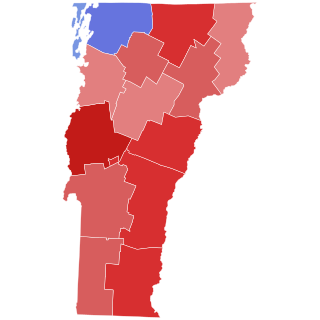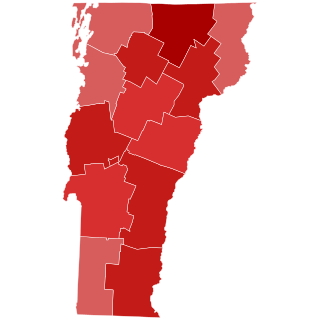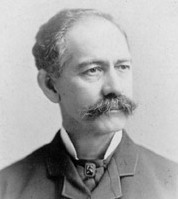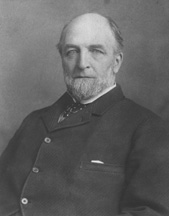
The 1928 Vermont gubernatorial election took place on November 6, 1928. Incumbent Republican John E. Weeks ran successfully for re-election to a second term as Governor of Vermont, defeating Democratic candidate Harry C. Shurtleff, an attorney. Weeks, who sought an exception to the Vermont Republican Party's "Mountain Rule", was the first Vermont Governor elected to a second two-year term.

The 1926 Vermont gubernatorial election took place on November 2, 1926. Incumbent Republican Franklin S. Billings, per the "Mountain Rule", did not run for re-election to a second term as Governor of Vermont. Republican candidate John E. Weeks defeated Democratic candidate Herbert C. Comings to succeed him.

The 1922 Vermont gubernatorial election took place on November 7, 1922. Incumbent Republican James Hartness, per the "Mountain Rule", did not run for re-election to a second term as Governor of Vermont. Republican candidate Redfield Proctor Jr. defeated Democratic candidate John Holmes Jackson to succeed him.

The 1920 Vermont gubernatorial election took place on November 2, 1920. Incumbent Republican Percival W. Clement, per the "Mountain Rule", did not run for re-election to a second term as Governor of Vermont. Republican candidate James Hartness defeated Democratic candidate Fred C. Martin to succeed him.

The 1918 Vermont gubernatorial election took place on November 5, 1918. Incumbent Republican Horace F. Graham, per the "Mountain Rule", did not run for re-election to a second term as Governor of Vermont. Republican candidate Percival W. Clement defeated Democratic candidate William B. Mayo to succeed him.

The 1916 Vermont gubernatorial election took place on November 7, 1916. Incumbent Republican Charles W. Gates, per the "Mountain Rule", did not run for re-election to a second term as Governor of Vermont. Republican candidate Horace F. Graham defeated Democratic candidate William B. Mayo to succeed him.

The 1914 Vermont gubernatorial election took place on November 3, 1914. Incumbent Republican Allen M. Fletcher, per the "Mountain Rule", did not run for re-election to a second term as Governor of Vermont. Republican candidate Charles W. Gates defeated Democratic candidate Harland B. Howe and Progressive candidate Walter J. Aldrich to succeed him.

The 1912 Vermont gubernatorial election took place on September 3, 1912. Incumbent Republican John A. Mead, per the "Mountain Rule", did not run for re-election to a second term as Governor of Vermont. Republican candidate Allen M. Fletcher defeated Democratic candidate Harland B. Howe and Progressive candidate Fraser Metzger to succeed him. Since no candidate won a majority of the popular vote, the election was decided and Fletcher was elected by the Vermont General Assembly in accordance with the state constitution.

The 1910 Vermont gubernatorial election took place on September 6, 1910. Incumbent Republican George H. Prouty, per the "Mountain Rule", did not run for re-election to a second term as Governor of Vermont. Republican candidate John A. Mead defeated Democratic candidate Charles D. Watson to succeed him.

The 1904 Vermont gubernatorial election took place on September 6, 1904. Incumbent Republican John G. McCullough, per the "Mountain Rule", did not run for re-election to a second term as Governor of Vermont. Republican candidate Charles J. Bell defeated Democratic candidate Eli H. Porter to succeed him.

The 1902 Vermont gubernatorial election took place on September 2, 1902. Incumbent Republican William W. Stickney, per the "Mountain Rule", did not run for re-election to a second term as Governor of Vermont. Republican candidate John G. McCullough defeated Local Option candidate Percival W. Clement and Democratic candidate Felix W. McGettrick to succeed him. Since no candidate won a majority of the popular vote, the election was decided and McCullough was elected by the Vermont General Assembly in accordance with the state constitution.

The 1900 Vermont gubernatorial election took place on September 4, 1900. Incumbent Republican Edward C. Smith, per the "Mountain Rule", did not run for re-election to a second term as Governor of Vermont. Republican candidate William W. Stickney defeated Democratic candidate John H. Senter to succeed him.

The 1892 Vermont gubernatorial election took place on September 6, 1892. Incumbent Republican Carroll S. Page, per the "Mountain Rule", did not run for re-election to a second term as Governor of Vermont. Republican candidate Levi K. Fuller defeated Democratic candidate B. B. Smalley to succeed him.

The 1882 Vermont gubernatorial election took place on September 5, 1882. Incumbent Republican Roswell Farnham, per the "Mountain Rule", did not run for re-election to a second term as Governor of Vermont. Republican candidate John L. Barstow defeated Democratic candidate George W. Eaton to succeed him.

The 1872 Vermont gubernatorial election took place on September 3, 1872. Incumbent Republican John W. Stewart, per the "Mountain Rule", did not run for re-election to a second term as Governor of Vermont. Republican candidate Julius Converse defeated Liberal Republican and Democratic nominee Abraham B. Gardner to succeed him.

The 1870 Vermont gubernatorial election took place on September 6, 1870. In keeping with the "Mountain Rule", incumbent Republican George W. Hendee, who had succeeded to the governorship at the death of Peter T. Washburn, did not run for election to a full term as Governor of Vermont. Republican candidate John W. Stewart defeated Democratic candidate Homer W. Heaton to succeed Hendee. The 1870 election marked the start of biennial gubernatorial elections in Vermont.

The 1869 Vermont gubernatorial election took place on September 7, 1869. Incumbent Republican John B. Page, per the "Mountain Rule", did not run for re-election to another term as Governor of Vermont. Republican candidate Peter T. Washburn, who had served in the Vermont House of Representatives and as Adjutant General of the Vermont Militia, defeated Democratic candidate Homer W. Heaton, a former member of the Vermont House, to succeed him. The 1869 election was the final time the Governor of Vermont was elected for a one-year term; terms were changed to two years beginning in 1870.

The 1867 Vermont gubernatorial election took place on September 3, 1867. In keeping with the "Mountain Rule", incumbent Republican Paul Dillingham was not a candidate for another term as governor of Vermont. The Republican nomination was won by John B. Page, who had previously served as Vermont State Treasurer. The Democratic nomination was won by John L. Edwards of Newport, who had previously served as State's Attorney of Orleans County. In the general election, Page was elected to a one-year term as governor.

The 1866 Vermont gubernatorial election took place on September 4, 1866. In keeping with the "Mountain Rule", Incumbent Republican Paul Dillingham was a candidate for a second one-year term as governor of Vermont. With the election taking place soon after the American Civil War, Dillingham ran as a pro-Union Republican. The Democratic nomination was won by Charles N. Davenport of Wilmington, an attorney and founder of the Brattleboro Reformer newspaper, who was also the Democratic nominee in 1865. In the general election, Dillingham was easily elected to a second one-year term as governor.

The 1865 Vermont gubernatorial election took place on September 5, 1865. In keeping with the "Mountain Rule", incumbent Republican J. Gregory Smith, who had served two one-year terms, was not a candidate for reelection as governor of Vermont. With the election taking during the American Civil War, Dillingham ran as a pro-Union Republican. The Democratic nomination was won by Charles N. Davenport of Wilmington, an attorney and founder of the Brattleboro Reformer newspaper. In the general election, Dillingham was easily elected to a one-year term as governor.













